The recruiting world has entered the AI era. Applicant-tracking systems no longer just match keywords, they interpret language, assess career patterns, and predict job fit. Today’s software can recognize leadership tone, detect inconsistencies in career timelines, and even evaluate communication style. If you want your resume to survive this new level of scrutiny, it must be written for both humans and machines. AI-optimized resumes read smoothly, contain measurable outcomes, and use consistent executive terminology across every section.
How AI Reads Your Resume
Next-generation ATS platforms use natural-language processing (NLP) to understand context beyond basic keyword matching. They analyze job-title progression, tenure, and how your responsibilities evolve over time. A Chief Operations Officer who shows “continuous improvement” metrics year after year will rank higher than one who lists duties without data.
AI tools weigh skill density against experience duration, looking for balance between strategic oversight and execution depth. They also recognize quantifiable impact; phrases like “reduced operational costs by 18%” or “grew EBITDA by $12M” which signal measurable performance.
Write in Natural Language
Older systems favored short fragments like “Budget management $5M.” Modern AI reads full sentences for intent. Write instead: “Managed a $5 million annual operations budget supporting cross-functional initiatives across six business units.” This phrasing helps NLP models identify leadership, scope, and collaboration patterns.
For example, in Sales or Marketing, write “Directed go-to-market strategy increasing qualified leads by 42% through cross-channel optimization,” instead of “Go-to-market strategy +42% leads.” Clarity, grammar, and context raise both readability and AI match rates.
Quantify Everything
AI loves numbers. Quantify results wherever possible: percentages, dollar amounts, growth rates, or time reductions. For example, a VP of Finance might write, “Implemented new forecasting system reducing monthly close time from 10 to 4 days.” An Operations Executive could say, “Increased warehouse throughput by 25% while reducing labor costs 12% year-over-year.” Sales leaders might include “Surpassed annual revenue targets by $8M,” while CMOs could highlight “Expanded brand awareness 60% through data-driven digital campaigns.” Every figure increases both credibility and ranking.
Stay Consistent with Job Titles
AI models map job titles to recognized taxonomies. Use standard industry labels like “Chief Financial Officer,” “Director of Sales,” or “VP, Operations.” Avoid creative alternatives like “Growth Guru” or “Efficiency Ninja.” If your internal title was unique, add a clear descriptor: “Client Success Lead (Enterprise Account Management)” or “Head of Business Transformation (Operations Strategy).” Consistency helps systems link your experience to employer search queries such as “Senior Operations Executive,” “VP Finance,” or “Marketing Director, SaaS.” Align your titles with how peers label similar roles on LinkedIn and major job boards.
Avoid AI Traps
Modern screening systems penalize manipulation attempts. Don’t hide keywords in white text or insert irrelevant skills purely for ranking. Avoid image-based templates or resumes with text embedded in graphics. These are unreadable to most parsers. Keep formatting uniform between your resume, LinkedIn, and portfolio documents. If you must use visual design, reserve it for human-view versions only. Recruiters notice when a candidate appears genuine versus artificially optimized, and AI does too. It can detect over-stuffing, repetition, and disjointed phrasing that signals low authenticity.
Optimize for Semantic Search
AI doesn’t just search for words; it understands meaning. Semantic algorithms detect contextual signals such as leadership, collaboration, or innovation. Phrases like “partnered with CFO to realign global supply-chain strategy” indicate teamwork and strategic oversight. For Finance executives, “guided cross-functional budgeting process” conveys collaboration and fiscal control. Marketing leaders might include “developed integrated campaigns bridging creative and analytics teams,” while Sales heads can use “mentored regional managers to improve pipeline accuracy.” The key is blending hard results with the soft-skill language recruiters seek.
Future-Proof Your Profile
Optimization extends beyond the resume itself. Use editable file types such as .docx or searchable PDFs, and keep filenames simple: “Firstname-Lastname-Resume-2025.” Mirror your keywords and tone across LinkedIn, portfolios, and executive bios. A Chief Marketing Officer might repeat terms like “brand architecture,” “market segmentation,” and “demand generation,” while an Operations VP emphasizes “Lean transformation” and “supply-chain optimization.”
Consistency across platforms reinforces credibility, helping AI tools verify identity and professional authority when cross-referencing multiple sources.
The Final Balance
AI can help recruiters identify qualified executives faster, but it can also filter you out if your resume isn’t written for intelligent systems. The best resumes find balance between authenticity and optimization: clear storytelling supported by measurable outcomes. Think of your document as both data and narrative. A professional story designed to engage human readers while feeding algorithms the structured information they need. When your resume speaks fluently to both, you bridge the gap between machine screening and human decision-making, dramatically improving your visibility among high-level candidates.












